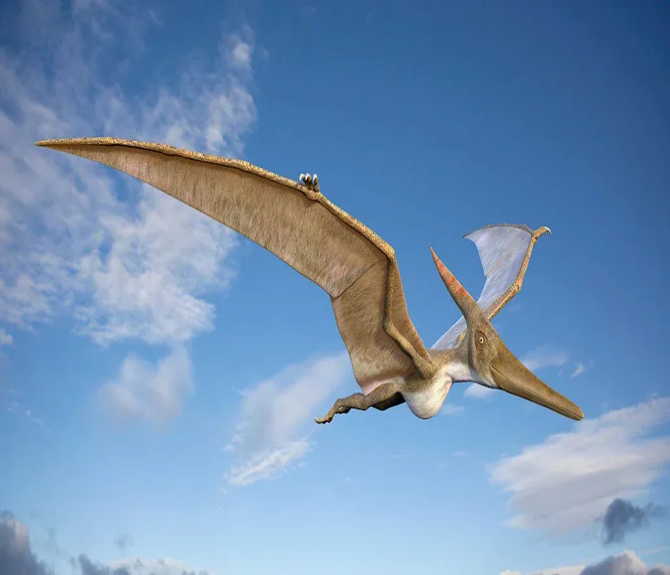New Pterosaur Discovery Sheds Light on Early Flight
Why in the news?
Paleontologists uncover a 100-million-year-old pterosaur species in Australia, offering insights into the evolution of powered flight in vertebrates, marking a significant paleontological discovery.
Discovery of a New Pterosaur Species:
- Paleontologists in western Queensland, Australia, uncovered a 100-million-year-old fossil of a new pterosaur species.
- Pterosaurs, flying reptiles of the Mesozoic Era (252.2–66 million years ago), were the first vertebrates to achieve powered flight.
- They belonged to the archosaur group, which includes birds and crocodiles, but were distinct from dinosaurs.
Adaptations and Evolution:
- Pterosaurs developed a wing structure using a skin membrane stretched across their elongated fourth finger, similar to bat wings.
- Early species had long, toothed jaws and tails, while later forms evolved shorter tails and toothless beaks.
- Notable species like Quetzalcoatlus reached unprecedented sizes, becoming the largest flying vertebrates.
- Evolutionary adaptations included long necks, throat pouches for fishing, and diverse ecological roles, showcasing convergent evolution with birds and bats.
Extinction and Legacy
- Pterosaurs went extinct approximately 5 million years ago during the Cretaceous-Tertiary extinction event.
- Their extinction allowed birds, which evolved from dinosaurs, to dominate the skies, continuing vertebrate flight’s evolutionary legacy.
About Pterosaurs:
- Flourished during the Mesozoic Era (Triassic, Jurassic, Cretaceous).
- First vertebrates capable of powered flight.
- Not dinosaurs, but part of the archosaur group, including birds and crocodiles.
- Included the largest flying vertebrate, Quetzalcoatlus.
Features:
- Wings formed by skin membrane connected to an elongated fourth finger.
- Early species had long, toothed jaws and tails; later forms had reduced tails and toothless beaks.
- Long necks, sometimes with throat pouches for fish-catching.
Extinction:
- Extinct by the end of the Cretaceous period (65.5 million years ago).
- Birds took over the skies after their extinction.
What is Convergent Evolution?
- Convergent Evolution: When unrelated organisms evolve similar traits.
- Occurs as solutions to similar environmental challenges or functions.
- Results in matching body shapes, behaviors, color patterns, or abilities despite different evolutionary origins.
Sources Referred:
PIB, The Hindu, Indian Express, Hindustan Times




